Table of Contents
Introduction: Fox Grape Origins and the Wild Pulse of Viticulture

The rugged vines of the Fox Grape have clawed their way through North American forests for millennia, their purple clusters dangling like nature’s own jewels amid the tangled undergrowth. These hardy specimens, known scientifically as Vitis labrusca, belong to the extensive Vitaceae family and represent something both ancient and revolutionary in the world of winemaking. From the rocky soils of Nova Scotia down to the humid valleys of Georgia, these native vines have shaped the very foundation of American viticulture through their remarkable resilience and distinctive characteristics.
The Fox Grape carries a distinctive musky fragrance that earned it its common name, evoking the earthy scent of wild foxes after a rain-soaked evening in the forest. This aromatic signature would later become the backbone of an entire industry, while the vine’s natural resilience offered solutions to crises that threatened to destroy European vineyards entirely. The story of modern viticulture cannot be told without acknowledging the profound influence of these wild American vines, whose genetic legacy continues to flow through contemporary grape breeding programs.
Native Americans had long recognized the value of these wild grapes, using them for food, medicine, and ceremonial purposes. Early European settlers discovered these vines growing abundantly in clearings and forest edges, where they formed dense thickets that could support the weight of climbing bears seeking their sweet fruit. The durability and adaptability of these native vines would prove essential as agriculture expanded across the challenging landscapes of the New World.
Table 1A: Nutrients Present in Fox Grapes
| Nutritional Category | Nutrients Present in Fox Grapes |
|---|---|
| Vitamins | Vitamin C, Vitamin K (copious), Vitamin A (trace), Vitamin B6, Folate (B9), Thiamine (B1), Riboflavin (B2), Niacin (B3) |
| Minerals | Potassium, Calcium, Magnesium, Iron (trace), Phosphorus, Copper (trace), Zinc (trace), Manganese |
| Antioxidants | Resveratrol (copious), Anthocyanins (copious), Quercetin (trace), Catechins, Gallic acid, Ellagic acid |
| Phytonutrients | Tannins, Flavonoids (copious), Polyphenols (copious), Stilbenes, Proanthocyanidins, Lutein (trace) |
Table 1B: Fox Grape Botanical Characteristics
| Characteristic | Description |
|---|---|
| Scientific Name | Vitis labrusca |
| Family | Vitaceae |
| Native Range | Eastern North America (Nova Scotia to Georgia) |
| Growth Habit | Climbing woody vine, 10-40 feet long |
| Leaf Type | Large, heart-shaped with woolly undersides |
| Fruit Type | Purple-black grapes with slip-skin texture |
| Flowering Period | May to July |
| Ripening Time | September to October |
| Soil Tolerance | Adaptable to various soil types |
| Climate Hardiness | USDA Zones 4-9 |
1. Fox Grape Resilience and the Phylloxera Solution
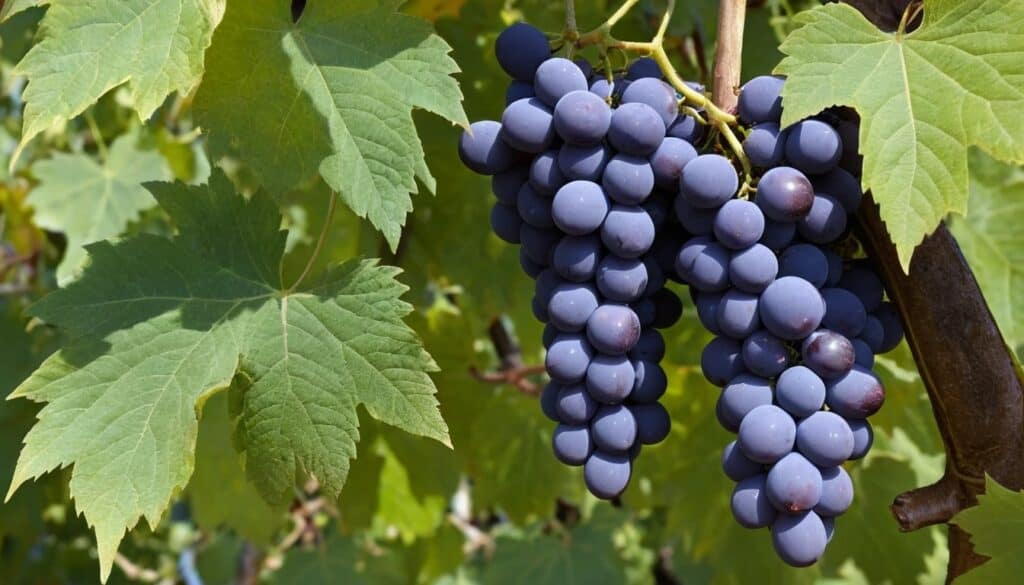
The late 1800s brought devastating consequences to European vineyards when tiny aphid-like insects called phylloxera arrived from America, systematically destroying the delicate root systems of Vitis vinifera varieties that had flourished for centuries. As French winemakers watched their ancient vineyards wither and die, with entire regions facing economic collapse, salvation came from an unexpected source: the very American vines that had inadvertently carried the pest across the Atlantic Ocean.
Fox Grape roots possessed natural resistance to phylloxera damage, having evolved alongside the insect for thousands of years in their native habitat. While not as commercially preferred as other American species like Vitis ripestris or Vitis berlandieri for rootstock purposes, Vitis labrusca demonstrated sufficient resistance to serve as an effective foundation in affected areas. This discovery revolutionized viticulture practices, establishing the now-standard practice of grafting European grape varieties onto American rootstocks.
The grafting solution literally saved the European wine industry from complete collapse and fundamentally changed how grapes would be cultivated worldwide. Vineyard owners learned to combine the disease resistance of Fox Grape roots with the superior wine-making qualities of European varieties, creating a symbiotic relationship between continents. This marriage of Old World and New World genetics created an entirely new paradigm in grape cultivation that continues today, with most commercial vineyards worldwide relying on American rootstock foundations.
The financial implications of this solution are significant and should not be underestimated. Entire wine regions that faced extinction were able to rebuild their industries, preserving centuries of cultural heritage and traditional knowledge. The phylloxera crisis also accelerated scientific research into grape genetics and plant pathology, laying the groundwork for modern agricultural biotechnology.
Table 2: Phylloxera Resistance Comparison
| Grape Species | Phylloxera Resistance Level | Grafting Compatibility | Commercial Use |
|---|---|---|---|
| Vitis labrusca (Fox Grape) | Moderate | Good | Limited rootstock use |
| Vitis ripestris | High | Excellent | Primary rootstock |
| Vitis berlandieri | High | Excellent | Primary rootstock |
| Vitis vinifera | None | N/A | Grafted scion only |
| Vitis aestivalis | High | Very Good | Specialized rootstock |
2. Fox Grape Evolution and Hybridization in Grape Science
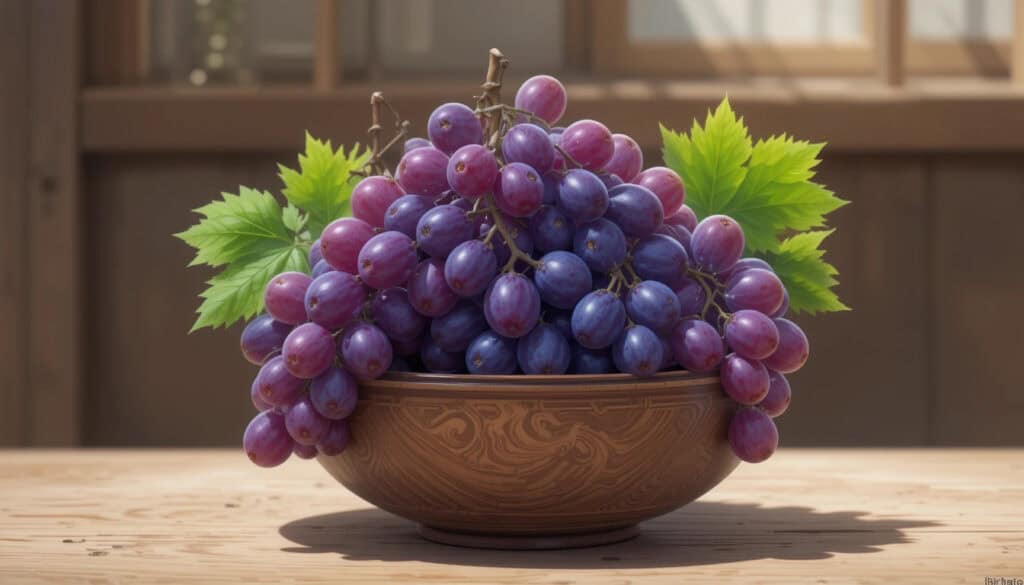
The genetic makeup of Fox Grapes opened entirely new frontiers in breeding programs through the scientific principle of genetic introgression, a process that allows beneficial traits from Vitis labrusca to flow into other grape varieties over multiple generations. This natural phenomenon creates hybrids that combine desirable characteristics from multiple species, resulting in varieties that possess enhanced survival traits while maintaining commercial viability.
Genetic introgression has enabled plant breeders to develop cultivars with significantly enhanced cold tolerance, natural disease resistance, and unique flavor profiles that reflect their American heritage. The thick, woolly leaf undersides of Fox Grapes provide natural protection against fungal diseases such as downy mildew and black rot, while their ability to survive harsh winters makes them invaluable for northern grape growing regions where European varieties would perish.
Modern breeding programs continue to utilize Fox Grape genetics extensively in developing new varieties suitable for challenging climates and sustainable farming practices. The process involves carefully selecting parent plants with complementary traits and monitoring offspring for desired characteristics over multiple generations, sometimes spanning decades of careful observation and selection. This methodical approach has produced numerous successful hybrids that combine Fox Grape hardiness with refined wine-making qualities.
The scientific understanding of Fox Grape genetics has also advanced through molecular techniques that allow researchers to identify specific genes responsible for desirable traits. This knowledge accelerates breeding programs and enables more precise selection of parent materials, reducing the time required to develop new varieties from decades to years.
Table 3: Notable Fox Grape Hybrids and Their Characteristics
| Cultivar | Fox Grape Contribution | Primary Use | Notable Traits |
|---|---|---|---|
| Concord | Direct descendant | Juice production | Cold hardy, distinctive flavor |
| Niagara | Labrusca genetics | White wine/juice | Disease resistant, productive |
| Catawba | Labrusca heritage | Wine production | Adaptable, good acidity |
| Delaware | Hybrid parentage | Premium wine | Refined flavor, cold tolerant |
| Isabella | Labrusca dominant | Historic variety | Hardy, aromatic |
| Agawam | Hybrid breeding | Table grape | Large berries, sweet flavor |
3. Fox Grape Flavor and the Rise of Concord Juice

The distinctive taste of Fox Grapes fundamentally transformed American beverage culture when Ephraim Wales Bull successfully developed the Concord grape in 1849 from seeds of native species growing in the challenging New England soil. This breakthrough created a grape variety that would dominate the American juice industry for generations, establishing a uniquely American flavor profile that differs dramatically from European grape traditions.
The Concord grape inherited the Fox Grape’s characteristic musky flavor, which Americans gradually came to associate with grape taste itself, creating a cultural preference that persists today. In 1869, Dr. Thomas Bramwell Welch bottled his first experimental batch of grape juice in his kitchen, initially marketing it as Dr. Welch’s Unfermented Wine specifically for communion services in Methodist churches. This groundbreaking pasteurization method initiated an industry that would ultimately render Concord grapes synonymous with grape juice on a global scale.
The success of Concord juice created a uniquely American beverage identity that stood apart from European wine traditions. Unlike European wine grapes that prioritized fermentation characteristics and tannin structure, Fox Grape descendants excelled in fresh juice production due to their intense flavor concentration, natural sweetness, and distinctive slip-skin texture. Their robust flavor profile made them ideal for processing into shelf-stable beverages that could reach markets across the expanding North American continent.
The industry grew exponentially as transportation networks expanded and refrigeration technology improved. By the mid-20th century, Concord grape juice had become a staple in American households, schools, and institutions. The National Grape Cooperative, formed in 1952, consolidated much of the industry under farmer ownership, ensuring stable prices and consistent quality standards that supported thousands of family farms across the northeastern United States.
Table 4: Concord Grape Industry Impact
| Year | Milestone | Significance |
|---|---|---|
| 1849 | Concord grape developed | Foundation of American grape juice industry |
| 1869 | First grape juice bottled | Commercial juice production begins |
| 1890 | Name changed to Grape Juice | Product identity established |
| 1945 | Welch’s becomes cooperative | Farmer ownership model |
| 1952 | National Grape Cooperative | Industry consolidation |
| Present | Multi-billion dollar industry | Global grape juice market |
4. Fox Grape Adaptability Across Climates and Soils
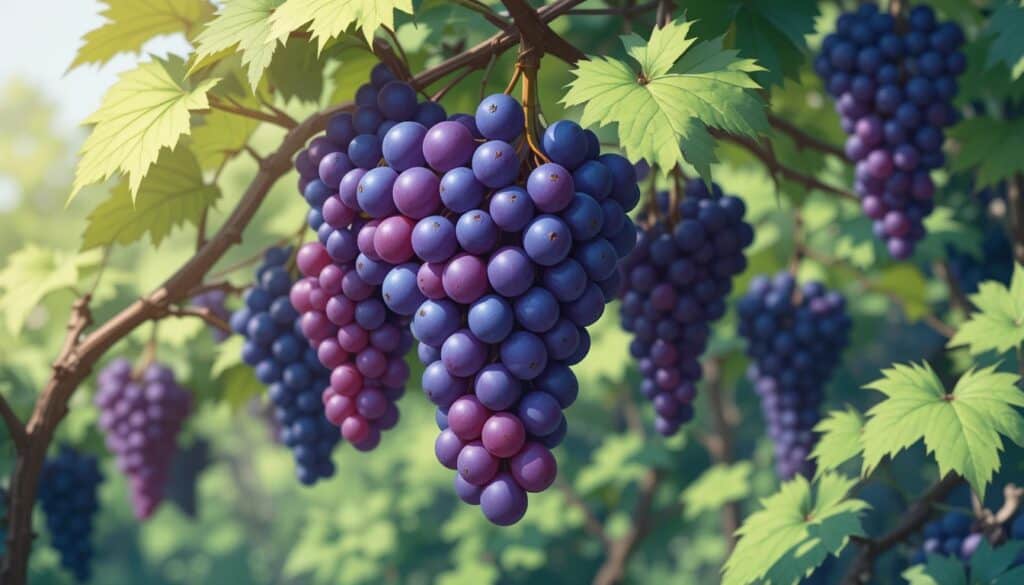
The natural resilience of Fox Grapes enables successful cultivation in regions where European varieties struggle or fail entirely, expanding the geographic boundaries of viticulture into previously unsuitable territories. These remarkable vines demonstrate exceptional adaptability, thriving in light sandy soils, medium loamy soils, and heavy clay soils while preferring well-drained conditions but tolerating various pH levels ranging from mildly acidic to mildly alkaline environments.
Fox Grapes possess physiological mechanisms that allow them to thrive in climates that would challenge most cultivated grape varieties. Their thick, corky bark provides excellent protection against winter freezes, while their extensive and deep root systems enable efficient water and nutrient uptake during drought conditions. This hardiness makes them particularly valuable in organic and sustainable farming systems where chemical interventions are minimized or eliminated entirely.
The climate adaptability of Fox Grapes has enabled vineyard establishment in regions previously considered unsuitable for grape growing, from the harsh winter conditions of Canadian provinces to the variable and unpredictable weather patterns of the American Midwest. These vines have significantly expanded the geographic footprint of viticulture, allowing farmers in marginal climates to participate in grape production for the first time.
Regional adaptations have led to the development of localized growing practices that maximize the natural advantages of Fox Grape varieties. Farmers have learned to work with the vines’ natural growth patterns, pruning schedules, and harvest timing to optimize fruit quality and yield in their specific microclimates. This knowledge has been passed down through generations of grape growers, creating regional expertise that continues to influence modern viticulture practices.
Table 5: Fox Grape Climate Tolerance
| Climate Factor | Tolerance Range | Adaptation Mechanism |
|---|---|---|
| Winter Temperature | -25°F to 0°F | Thick bark, dormancy response |
| Summer Heat | 60°F to 90°F | Leaf shading, efficient water use |
| Humidity | 40% to 80% | Disease resistance, leaf structure |
| Rainfall | 25-50 inches annually | Deep root system, drought tolerance |
| Soil pH | 5.5 to 7.5 | Nutrient uptake flexibility |
| Soil Drainage | Well-drained to moderate | Root adaptation |
5. Fox Grape Leaf Anatomy and Sustainable Farming Models
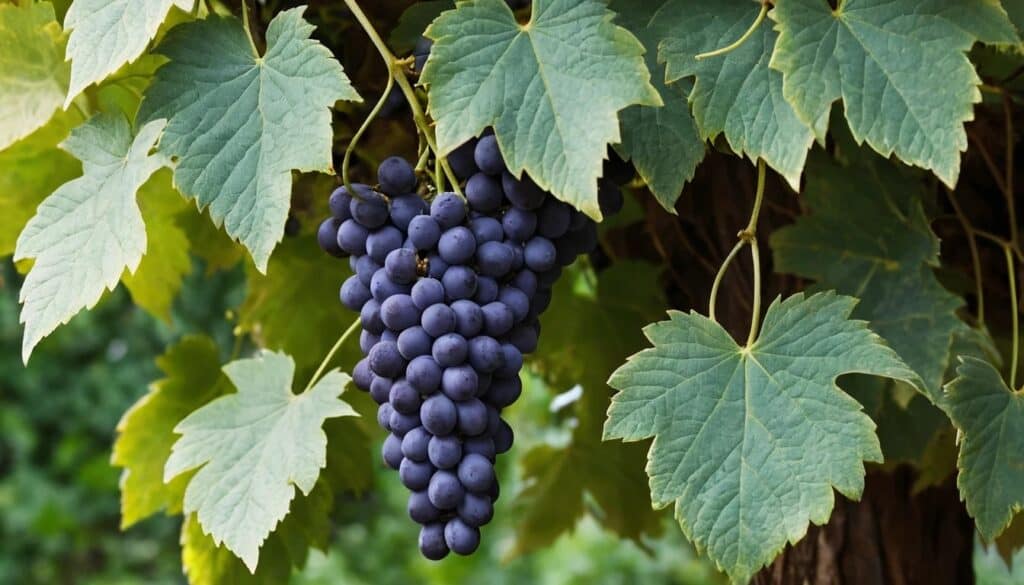
The distinctive leaf structure of Fox Grapes demonstrates remarkable plant morphological plasticity, an adaptive mechanism that supports sustainable viticulture practices and reduces reliance on chemical inputs. The large, heart-shaped leaves feature dense woolly undersides that provide natural protection against fungal diseases and pest infestations, creating a biological defense system that has evolved over thousands of years.
Plant morphological plasticity allows Fox Grape vines to dynamically modify their leaf characteristics based on environmental conditions, demonstrating an impressive ability to respond to changing circumstances. In sunny locations, leaves develop thicker protective waxy coatings and increased trichome density, while shaded areas produce thinner, more efficient photosynthetic surfaces with enhanced chlorophyll concentration. This adaptability reduces the need for chemical disease control and supports organic farming methods that prioritize ecological balance.
The leaf architecture of Fox Grapes contributes significantly to microclimate management within vineyards, creating natural systems that benefit both the vines and surrounding ecosystem. The broad leaves create beneficial shade patterns that protect fruit clusters from excessive sun exposure while maintaining adequate air circulation to prevent fungal problems. This natural design principle has influenced modern vineyard management practices worldwide, inspiring canopy management techniques that optimize light exposure and air movement.
Research into Fox Grape leaf anatomy has revealed sophisticated mechanisms for water regulation and nutrient transport that enable the vines to thrive in challenging conditions. The extensive vascular system within the leaves efficiently distributes water and nutrients throughout the plant, while specialized cells regulate transpiration rates to conserve moisture during drought periods. Understanding these mechanisms has informed the development of drought-resistant grape varieties for regions facing water scarcity.
Table 6: Fox Grape Leaf Characteristics and Benefits
| Leaf Feature | Description | Sustainable Benefit |
|---|---|---|
| Size | Large, 6-10 inches across | Effective shade coverage |
| Shape | Heart-shaped with lobes | Optimal light interception |
| Texture | Woolly undersides | Natural disease resistance |
| Thickness | Variable by environment | Drought tolerance |
| Color | Dark green upper surface | Efficient photosynthesis |
| Venation | Prominent, well-defined | Structural support |
6. Fox Grape’s Role in Shaping North American Wine Identity
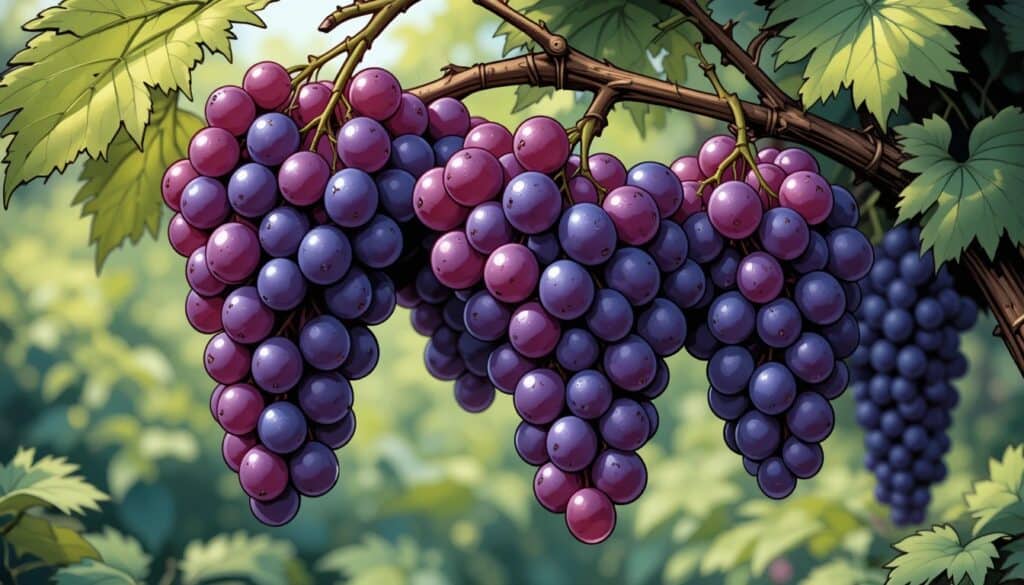
Fox Grapes created a distinctly American wine character that diverged significantly from European traditions, establishing regional identities that celebrated rather than concealed the wild heritage of native varieties. The native vines produced wines with bold, fruity flavors that reflected the untamed character of their forest origins, creating taste profiles that were initially controversial but eventually became celebrated as authentic expressions of American terroir.
Eastern American wine regions embraced Fox Grape characteristics wholeheartedly, developing wine styles that honored the distinctive flavors rather than attempting to mask them. The Finger Lakes region of New York, the Ohio River Valley, and parts of the Canadian Maritimes built their entire wine identities around these distinctive American varieties, creating tourist destinations and cultural traditions that persist today.
The acceptance of Fox Grape-based wines challenged European wine orthodoxy and established the revolutionary principle that quality wine could express regional character rather than conform to international standards. This philosophical shift influenced the development of American wine culture and contributed to the broader recognition of terroir as a legitimate expression of place, regardless of whether that place matched traditional European wine regions.
The cultural impact of Fox Grape wines extended beyond the wine industry itself, becoming symbols of American independence and ingenuity. These wines represented a rejection of European standards and an embrace of indigenous American flavors, contributing to the development of a distinctly American agricultural identity that valued adaptation and innovation over tradition and conformity.
Regional wine festivals and celebrations developed around Fox Grape varieties, creating cultural events that brought communities together and established lasting traditions. These gatherings celebrated local agricultural heritage while educating consumers about the unique characteristics of American grape varieties, fostering appreciation for regional wine styles that might otherwise have been overlooked.
Table 7: Regional Fox Grape Wine Traditions
| Region | Primary Varieties | Wine Style | Cultural Impact |
|---|---|---|---|
| Finger Lakes, NY | Concord, Niagara, Catawba | Sweet to semi-dry | Tourist industry foundation |
| Ohio River Valley | Catawba, Delaware | Traditional American | Historic wine region |
| Canadian Maritimes | Hybrid varieties | Cold-climate wines | Regional identity |
| Hudson Valley, NY | Multiple hybrids | Diverse styles | Agricultural heritage |
| Lake Erie Region | Concord, Niagara | Juice and wine | Industrial production |
| Midwest States | Hardy hybrids | Survival wines | Pioneer tradition |
7. Fox Grape’s Genetic Legacy in Cold-Hardy Cultivars
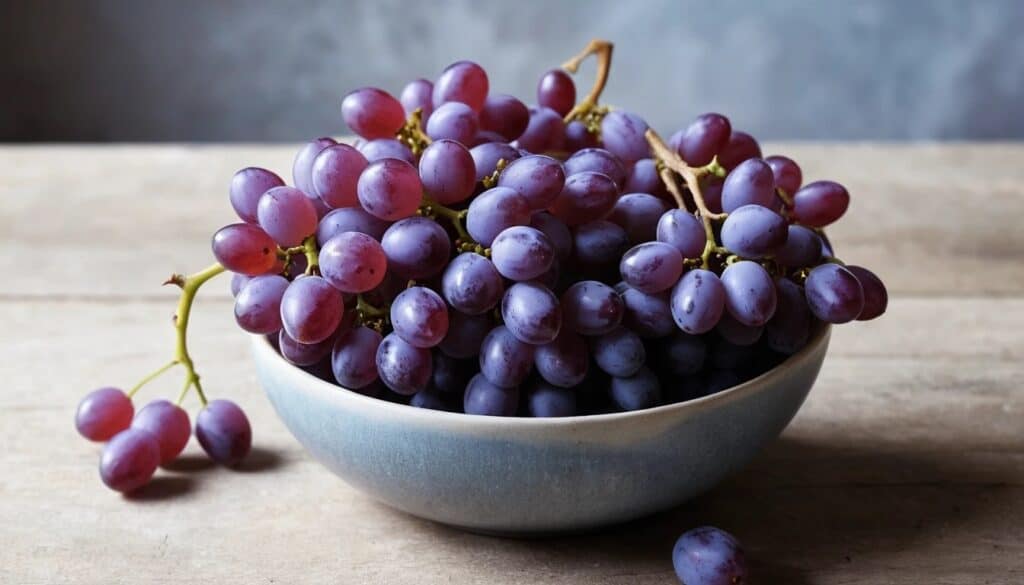
The genetic material of Fox Grapes continues to influence modern breeding programs focused on developing cold-hardy cultivars specifically designed for northern climates where traditional European varieties cannot survive. Plant breeders utilize sophisticated DNA markers and genetic sequencing techniques to identify and transfer specific genes responsible for winter hardiness, disease resistance, and fruit quality, accelerating the development of improved varieties.
Modern molecular breeding techniques allow precise incorporation of Fox Grape traits into new varieties without compromising wine quality or introducing undesirable characteristics. Marker-assisted selection enables breeders to track beneficial genes through multiple generations of crosses, dramatically reducing the time required to develop new cultivars from decades to years while maintaining the scientific rigor necessary for successful variety development.
The genetic legacy of Fox Grapes extends beyond traditional breeding programs into cutting-edge biotechnology applications that promise to revolutionize grape cultivation. Researchers study the molecular mechanisms behind their natural resistance traits to develop new approaches for crop improvement and climate adaptation strategies, potentially creating varieties that can thrive in environments that would be impossible for conventional grapes.
University breeding programs across North America continue to release new cold-hardy varieties that incorporate Fox Grape genetics, providing options for grape growers in regions previously considered too harsh for viticulture. These programs collaborate with local growers to test new varieties under real-world conditions, ensuring that new releases perform well in commercial vineyard settings rather than just experimental plots.
The success of cold-hardy breeding programs has enabled the expansion of grape growing into previously impossible regions, creating new economic opportunities for farmers and contributing to rural development in northern states and provinces. This expansion has also diversified the genetic base of commercial grape production, reducing reliance on a limited number of varieties and increasing the resilience of the industry to climate change and emerging diseases.
Table 8: Modern Cold-Hardy Cultivars with Fox Grape Heritage
| Cultivar | Release Year | Cold Hardiness | Primary Use | Fox Grape Contribution |
|---|---|---|---|---|
| Marquette | 2006 | -25°F | Red wine | Cold tolerance genes |
| Frontenac | 1996 | -30°F | Red wine | Winter survival traits |
| La Crescent | 2002 | -25°F | White wine | Disease resistance |
| Petite Pearl | 2014 | -25°F | Red wine | Fruit quality balance |
| Itasca | 2017 | -30°F | White wine | Extreme cold tolerance |
| King of the North | 2015 | -25°F | Red wine | Hardy rootstock genetics |
8. Fox Grape Vines and Ecosystem-Level Sustainability Models
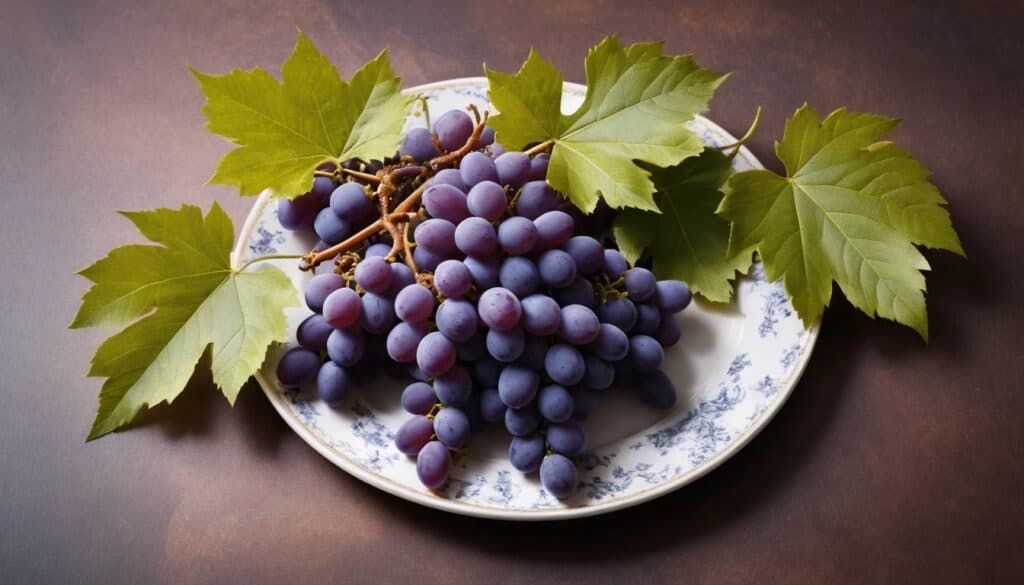
Fox Grapes support comprehensive agroecological systems that promote natural pest balance and biodiversity within vineyard environments, demonstrating how native species can serve as foundations for sustainable agricultural practices. These native vines have co-evolved with local ecosystems over millennia, creating intricate relationships with beneficial insects, birds, and soil microorganisms that contribute to overall vineyard health and productivity.
Agroecology principles demonstrate how Fox Grape vines function as keystone species within their native habitats, providing essential ecosystem services that extend far beyond grape production. They provide nectar for native pollinators during critical blooming periods, shelter for beneficial predators that control pest populations, and root systems that support healthy soil communities through mycorrhizal associations and organic matter contributions.
The ecosystem services provided by Fox Grapes extend beyond individual vineyard boundaries, creating positive impacts on regional environmental health. Native vine plantings create wildlife corridors that connect fragmented habitats, support pollinator populations that benefit surrounding agricultural areas, and contribute to regional biodiversity conservation efforts. These benefits make Fox Grapes valuable components of landscape-scale sustainability initiatives.
Research into Fox Grape ecosystem interactions has revealed complex relationships that demonstrate the importance of native species in agricultural systems. Studies have shown that vineyards incorporating native Fox Grape varieties support significantly higher populations of beneficial insects, birds, and soil organisms compared to monoculture plantings of non-native varieties. This biodiversity creates natural pest control systems that reduce the need for chemical interventions.
The integration of Fox Grapes into modern vineyard design has inspired the development of habitat-friendly farming practices that balance production goals with environmental stewardship. These approaches include the establishment of hedgerows, cover crop systems, and water management practices that support both grape production and ecosystem health, creating models for sustainable agriculture that can be adapted to various crops and regions.
Table 9: Fox Grape Ecosystem Services
| Service Category | Specific Benefits | Mechanism |
|---|---|---|
| Pollinator Support | Nectar for native bees | Abundant flower clusters |
| Soil Health | Mycorrhizal networks | Deep root associations |
| Pest Control | Beneficial insect habitat | Diverse plant architecture |
| Wildlife Habitat | Food for birds, mammals | Fruit production |
| Erosion Control | Slope stabilization | Extensive root systems |
| Carbon Sequestration | Long-term carbon storage | Woody biomass accumulation |
Conclusion: Fox Grape’s Enduring Legacy in the Vineyards of Tomorrow
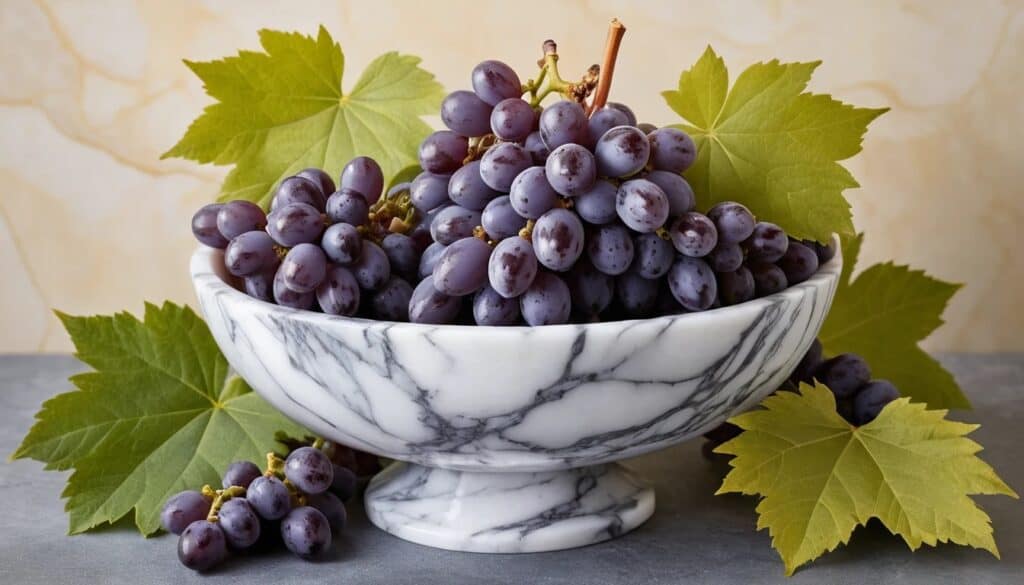
The wild vines that once tangled through American forests have become architects of modern viticulture, their genetic whispers still echoing in vineyards worldwide as testament to the enduring power of adaptation and resilience. The phylloxera solution that preserved European winemaking and the juice industry that shaped American taste preferences have both integrated Fox Grapes into the fundamental essence of modern grape cultivation, thereby leaving a lasting impact on agricultural history.
As climate change challenges traditional grape growing regions with unpredictable weather patterns, rising temperatures, and emerging diseases, the adaptive lessons embedded in Fox Grape genetics become increasingly valuable for the future of sustainable agriculture. Their natural resilience, evolved disease resistance, and remarkable climate tolerance offer living blueprints for developing the next generation of sustainable grape varieties that can thrive in an uncertain future.
The musky fragrance that once marked wild American hillsides now carries the promise of agricultural innovation, reminding us that solutions to modern challenges often lie hidden in the wisdom of native species that have survived and thrived for millennia. The genetic diversity preserved in Fox Grape populations represents an invaluable resource for plant breeders and biotechnology researchers working to develop crops that can feed a growing global population while protecting environmental resources.
The future of viticulture may well depend on remembering and applying these ancient lessons of adaptation and resilience that Fox Grapes have taught us. Their story demonstrates that the most profound innovations in agriculture often come not from technological complexity, but from understanding and working with the elegant wisdom of plants that have learned to thrive in harmony with their environment through countless generations of natural selection.
Fox Grapes remind us that sustainable agriculture requires more than efficient production techniques; it demands a fundamental understanding of ecological relationships and the courage to embrace solutions that may challenge conventional thinking. Their legacy continues to shape the vineyards of tomorrow, one resilient vine at a time, offering hope for an agricultural future that balances productivity with environmental stewardship and cultural heritage preservation.
Table 10: Fox Grape’s Continuing Contributions to Modern Viticulture
| Contribution Area | Current Applications | Future Potential |
|---|---|---|
| Climate Adaptation | Cold-hardy breeding | Extreme weather tolerance |
| Disease Management | Organic viticulture | Biological resistance systems |
| Sustainable Farming | Ecosystem integration | Regenerative agriculture |
| Genetic Resources | Breeding programs | Biotechnology applications |
| Regional Identity | Terroir expression | Cultural preservation |
| Industry Innovation | Processing technology | Novel product development |




